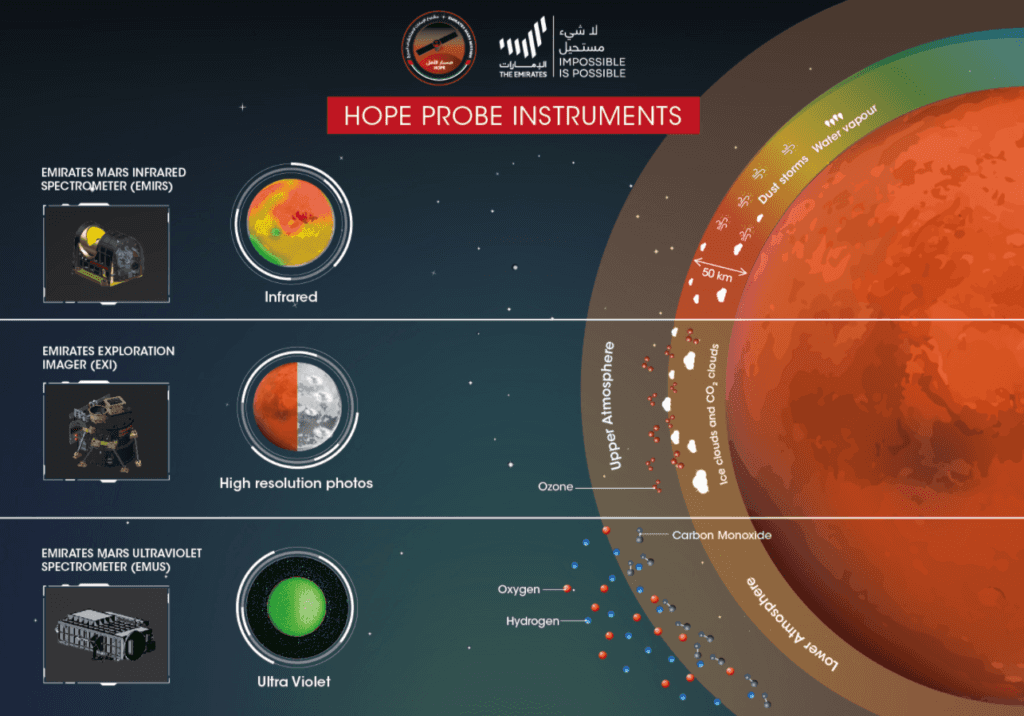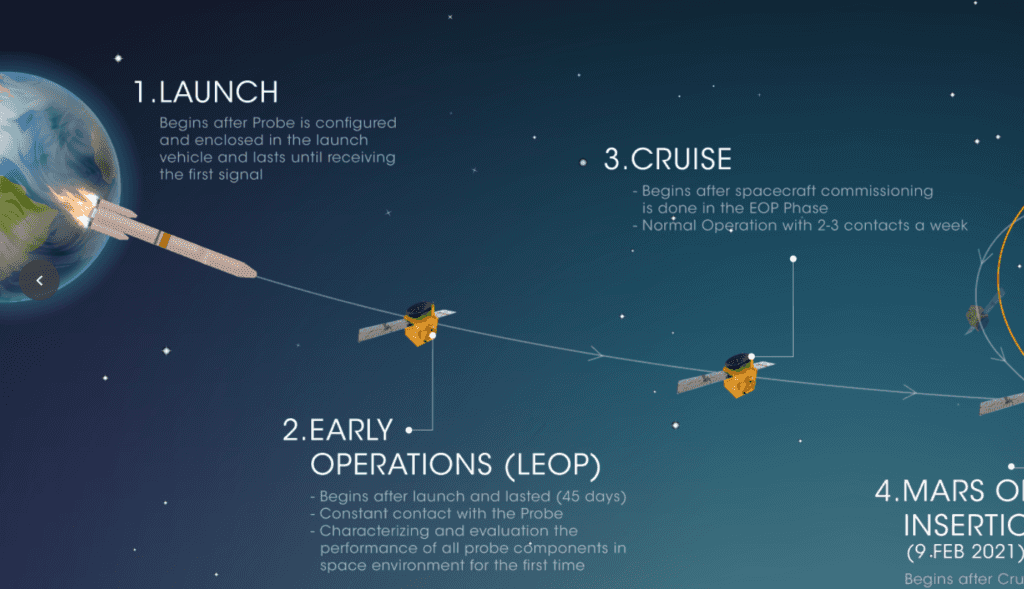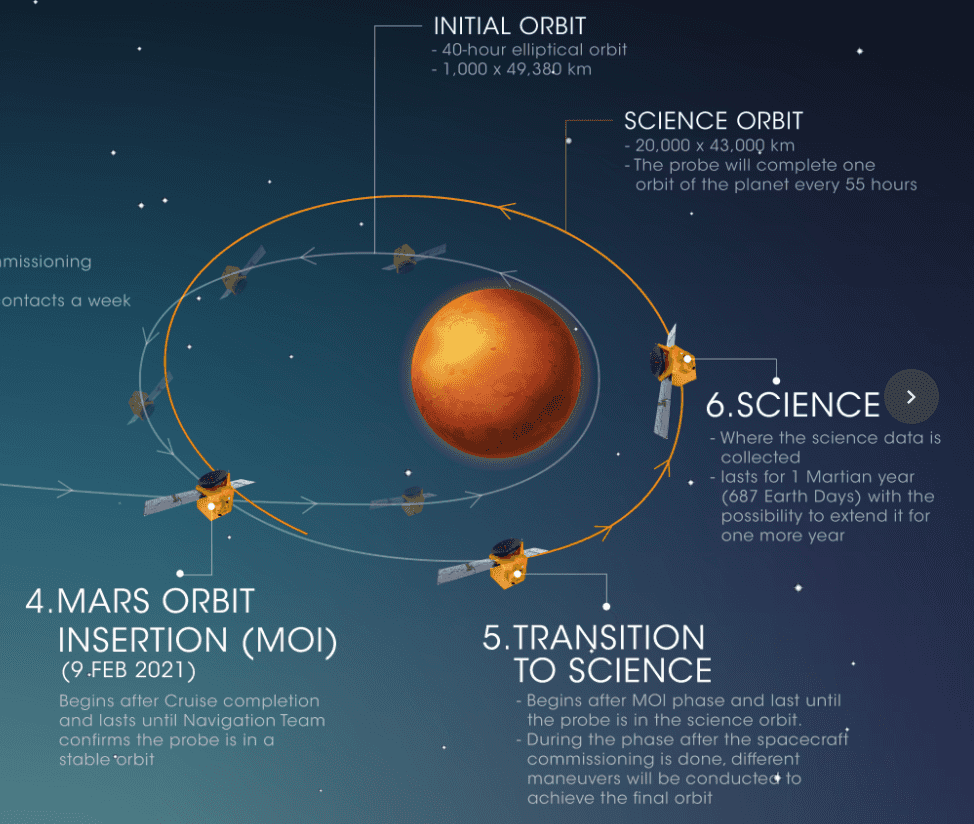The United Arab Emirates is set to become the fifth space power to reach Mars’ orbit, after previous successful Mars orbit missions by the United States, Russia, China, the European Union, and India.
On July 19, 2020, the Emirates Mars Mission’s Al Amal “Hope Probe” launched from Tanegashima, Japan. The mission is now nearing its planned orbit around Mars and is due to enter Mars’ gravitational pull on Tuesday, Feb. 9.
Ahead of the technically complex space mission, Emirates Mars Mission Director Omran Sharaf described the six-year process to American Military News, from starting the United Arab Emirates Space Agency (UAESA) to getting a Mars-bound rocket off the ground and on its way to the fourth planet from the sun.
The UAE’s mission entails placing a satellite into Mars’ orbit, known as the Mars Orbital Insertion (MOI). After inserting, the Hope probe will then use an array of cameras and infrared and ultraviolet sensors to build a model of the Martian climate and seasons. The probe will also study changes in the Martian atmosphere, including the escape of hydrogen and oxygen gasses from the planet into space.

Sharaf told American Military News the actual insertion into Mars’ gravity will begin at 7:30 p.m. Dubai time (10:30 a.m. ET) on Tuesday and “it will take 27 minutes for us to get into Mars’ gravity.” If successful, the mission will then collect a range of weather and atmospheric data and begin transmitting that information back to Earth in September.
Sharaf said it is a proud moment for the UAE, but “it’s also a very stressful one,” as about half of all missions to Mars have resulted in partial or total failure.

The MOI presents the most difficult part of the mission, as all six of the probe’s Delta-V thrusters will fire during the 27-minute insertion period, working to slow the probe from its cruising speed of about 121,000 km/h (about 75,000 miles per hour) to something nearer to 18,000 km/h (about 11,184 miles per hour). Much of the mission’s maneuvers also had to be pre-planned, as there is an 11-minute delay to transmit information to the probe. The total time to relay a problem with the probe and send an immediate response is 22 minutes.
Adding to the stakes, this Mars insertion period will be the first real test of the probe’s capabilities. Sharaf said tests were done on the equipment at facilities at the University of Colorado Boulder and in the UAE, but there’s no real way to replicate the conditions the probe will actually face during the MOI.

Sharaf said the mission was named “Hope” because it encompasses much of the UAE’s hopes to advance the countries scientific sector and to use scientific ambassadorship to strengthen relations between ethnic groups and nations. He said going to Mars is meant to be a “catalyst mission” for growing the country’s science and technology sectors and to counter problems in the Middle East, including large percentages of Arab youth leaving the region or “joining the wrong groups.”
He added that a major goal of the Emirates Mars Mission was to reach Mars by the 50th anniversary of the country’s formation on December 2, 1971. In setting that goal, Sharaf said the UAE wanted to send the message to the country’s youth that “if the UAE is able to reach Mars in less than 50 years, they can do much more.”
Sharaf acknowledged that part of the UAE’s unique path from starting up its own space agency to launching a Mars mission in six years is owed to collaboration with global partners and tapping into the knowledge gained from previous successful space missions. In addition to using a Japanese launch facility, the UAE worked with CU Boulder’s Laboratory for Atmospheric Space Physics (LASP), Arizona State University and UC Berkeley. The mission also drew from partnerships with the U.K., Canada, France and the Netherlands to prepare research, aerospace and navigational equipment for the project.
The launch was coordinated through the Mohammed bin Rashid Space Centre (MBRSC) in the UAE, but also rely’s on NASA’s deep space network (DSN) communications systems.
Sharaf said one of the objectives with the mission was to further the UAE’s reputation as a country open to scientific collaboration.
While drawing from the knowledge and experience of other nation’s space missions, Sharaf said a major aspect of the mission was a “build, don’t buy” mentality, which saw the creation of more than 200 new technical designs. Sharaf said the Emirates Mars Mission aims to add to the existing knowledge of space exploration, so that it may be used for future advancements. “The science must be novel,” he said.
According to a summary of the UAE’s Mars mission goals, released by the University College London, the Hope probe’s data will be released to the public through a live, open-access infrastructure on the “Emirates Data Centre.”
The UAESA will share live coverage of Hope’s Mars insertion on Feb. 9 beginning at 10:30 a.m. ET on its website.



